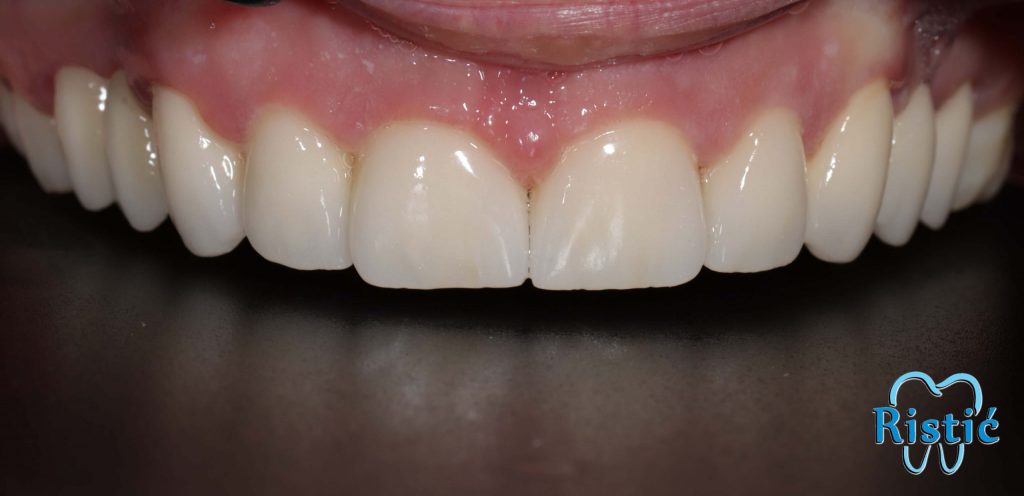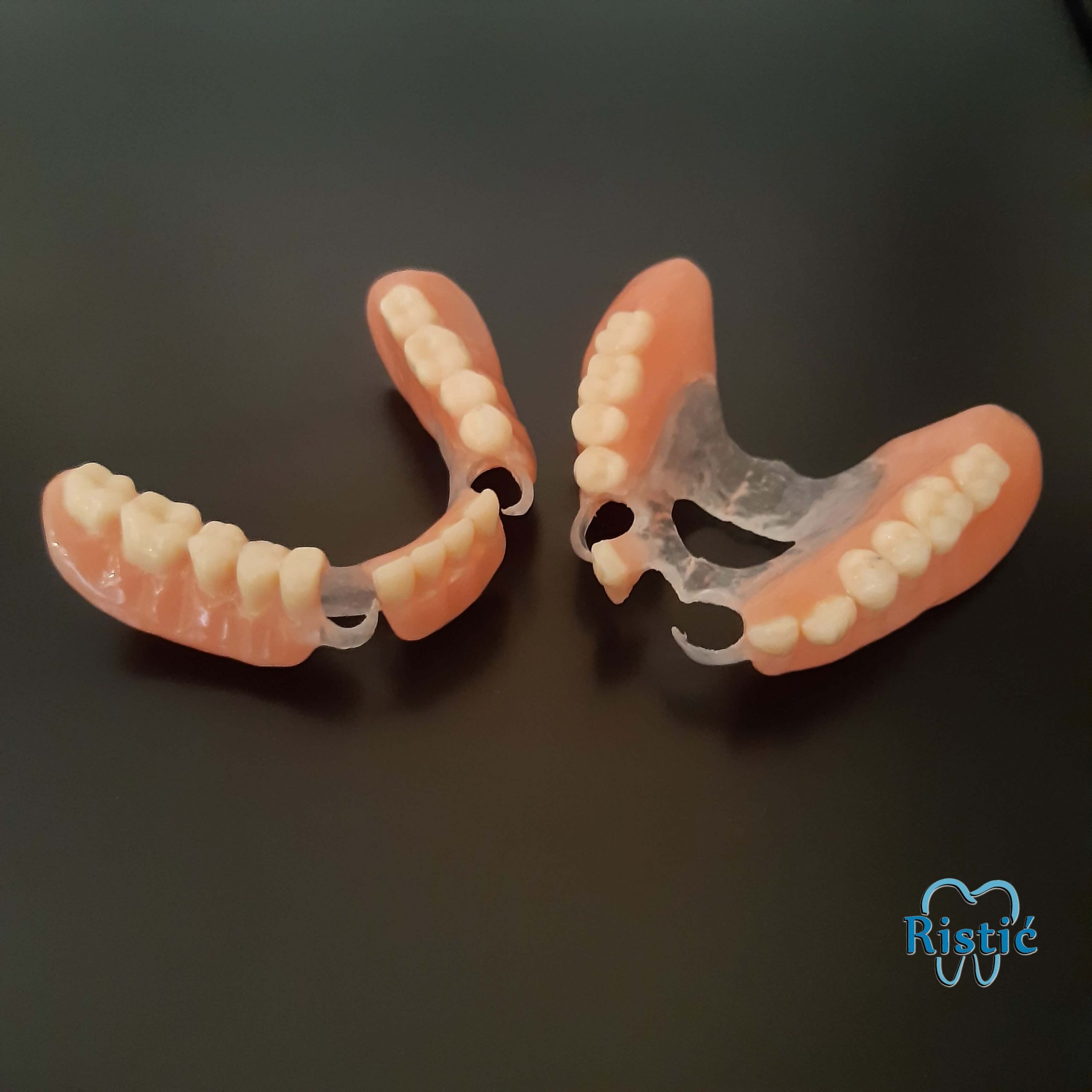Dental Prosthetics
Crowns and Bridges
Crowns and bridges are created:
- when one or more teeth are missing
- when a tooth is too much weakened by cavity, which may result in its cracking
- when the tooth shape or color aren’t satisfactory
Non-metal crowns and bridges are made from zirconium-oxide ceramic. Light passes through it the same way it does through natural teeth, and the color of the restoration type can be adjusted to the teeth’s natural color. This makes your smile look beautiful and natural.
A very important characteristic that non-metal crowns and bridges have is biocompatibility. The gingiva doesn’t recede or blacken; instead, it ideally adheres to these types of crowns. Because of this trait, the teeth won’t become ‘naked’ or overtaken by cavity, which consequently helps the crowns last considerably longer.

Metal-ceramic crowns and bridges are created by applying a ceramic layer over the metal base. Their pricing is lower than non-metal crowns, but it is important to stress that these materials impose certain limitations on aesthetics and functionality.
Whether you opt for non-metal or metal-ceramic crowns, our professional team will make sure the beauty and quality of the construction process are to your liking.
Partial Dentures
Partial dentures are made when a jaw lacks the required number of teeth for a bridge construction.
Deflex Partial Dentures
 These dentures are made from special thermoplastic polyamide. They are hypoallergenic and can therefore be worn by patients allergic to classic acrylic dentures. They possess slight elasticity and cause less damage to the oral mucosa, enabling the patients to get used to them faster. These dentures are lighter than classic dentures and more resistant to blows and falls. They can be created to fit the color of the oral mucosa and can also be transparent. The hooks are most often transparent and are nearly inconspicuous. Most patients consider these dentures one of the most beautiful mobile prosthetic restoration devices.
These dentures are made from special thermoplastic polyamide. They are hypoallergenic and can therefore be worn by patients allergic to classic acrylic dentures. They possess slight elasticity and cause less damage to the oral mucosa, enabling the patients to get used to them faster. These dentures are lighter than classic dentures and more resistant to blows and falls. They can be created to fit the color of the oral mucosa and can also be transparent. The hooks are most often transparent and are nearly inconspicuous. Most patients consider these dentures one of the most beautiful mobile prosthetic restoration devices.
Partial Skeletal (WISIL) Dentures
These dentures are made from noble metals and acrylics. The option of embedding attachments (studs, sliders, cuts, etc.) is also available. Since these parts replace metal hooks, the connection with the denture with the bridge is better and the denture itself looks more beautiful.
Partial Acrylic Dentures
These dentures are made entirely from acrylics. The hooks are crafted from steel wire and can damage the teeth during prolonged use, which is why these dentures are usually only temporarily used.
Complete Denture
A complete acrylic denture can be created when a patient lacks all of their teeth. Restoration of lost teeth enables patients to chew food freely, protect their stomach, and, by consuming various types of food, protect all other vital organs as well. Dentures enable normal speech and make your face look younger. Your smile can stay beautiful even during old age.
Implantology
Fixed Prosthetics on Implants
When one or more teeth are missing and the neighboring teeth are well-preserved, it is wiser to install implants rather than create classic bridges. Implants can be used to extend rows of teeth but also create bridges when the patient lacks all teeth but does not want or cannot wear a complete denture.
These prosthetics are more comfortable than complete dentures, and the aesthetics is high-level.
Mobile Prosthetics on Implants
A patient’s alveolar ridges can sometimes be exceptionally resorbed, in which case the complete denture in the mouth is unstable. The constant denture movement, food getting stuck in barely reachable areas, and chewing injuries represent considerable problems to these kinds of patients. A complete denture can be fixed to the installed implants with studs (attachments). Patients can then eat without any problems, remove the denture, and take proper care of their oral cavity hygiene.
Copyright 2025 | Coded and designed by Dinulović Dejan
